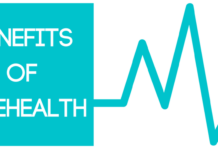If smoother, brighter, more youthful-looking skin is something you’re aiming for, chances are you’ve come across microneedling and laser resurfacing as popular treatment options. While both offer impressive skin-rejuvenating results, they work in very different ways. So how do you know which one is the right fit for your skin and goals?
Let’s take a closer look at what each treatment involves and how to decide which one might work best for you.
What is microneedling?
Microneedling, sometimes called collagen induction therapy, is a minimally invasive treatment that uses a device with tiny, sterile needles to create controlled micro-injuries in the skin. While that might sound a bit scary, these micro-injuries are actually beneficial—they stimulate your body’s natural healing process, encouraging the production of collagen and elastin (Alam et al., 2014).
With time and a series of treatments, microneedling can help improve fine lines, acne scars, stretch marks, large pores, and uneven skin texture. There’s very little downtime—most people experience a bit of redness and mild swelling for a day or two.
Best for:
- Fine lines and wrinkles
- Mild acne scars
- Large pores
- Uneven skin tone or texture
- Preventative anti-aging
What is laser resurfacing?
Laser resurfacing takes a more intense approach by using focused light energy to either remove layers of skin (ablative lasers like CO₂ or Er:YAG) or heat the deeper layers of the skin without damaging the surface (non-ablative lasers like Fraxel). Both types of lasers aim to boost collagen and stimulate new skin growth (Sundaram et al., 2015).
Laser treatments tend to deliver dramatic results—often after just one or two sessions—but they also come with more downtime. Recovery time can range from a few days for non-ablative lasers to over a week for ablative ones. Some peeling, redness, and sensitivity are expected during the healing process.
Best for:
- Deep wrinkles and creases
- Acne or surgical scars
- Sun damage and pigmentation
- Uneven skin tone
- More advanced signs of aging
- Key differences at a glance
| Feature | Microneedling | Laser Resurfacing |
| How it works | Uses tiny needles to create micro-injuries | Uses laser energy to remove or heat skin layers |
| Downtime | Minimal (1–3 days) | Moderate to high (3–10 days) |
| Sessions needed | 3–6 sessions for best results | 1–3 sessions depending on severity |
| Cost per session | Generally more affordable | Higher upfront cost |
| Suitable for all skin tones | Yes | Some lasers may not suit darker skin |
| Discomfort level | Mild (numbing cream applied) | Mild to moderate; topical anesthesia may be used |
Which treatment is right for you?
There’s no one-size-fits-all answer. Your choice depends on your skin goals, how much downtime you’re comfortable with, your budget, and even your skin tone.
If you’re looking for a gentle way to improve skin texture and prevent signs of aging with little to no downtime, microneedling is a solid choice. On the other hand, if you’re dealing with deeper lines, more visible sun damage, or stubborn acne scars—and you’re okay with some recovery time—laser resurfacing may deliver faster, more noticeable results.
It’s also worth noting that microneedling tends to be safer for darker skin tones, as certain lasers can carry a higher risk of pigmentation changes (Alster & Nanni, 1999). That said, newer laser technologies are becoming increasingly safe and customizable.
Dermatologist-approved approach
Many dermatologists recommend a personalized approach, sometimes even combining both treatments over time. For instance, you might use laser resurfacing for significant correction, then follow up with microneedling to maintain results.
Whatever you choose, remember that skin care is a journey. Treatments like microneedling and lasers are most effective when paired with sun protection, a quality skincare routine, and healthy lifestyle habits.
Both microneedling and laser resurfacing offer incredible skin benefits—but they suit different needs. If you’re unsure which one to choose, a consultation with a dermatologist or licensed aesthetic provider can help tailor the treatment to your skin’s unique story.
Because when it comes to healthy, glowing skin, it’s not just about the tools—it’s about choosing the right path for you.
References
- Alam, M., Dover, J. S., & Arndt, K. A. (2014). Microneedling: A review and practical guide. Journal of Clinical and Aesthetic Dermatology, 7(5), 36–43. https://www.ncbi.nlm.nih.gov/pmc/articles/PMC4056816/
- Alster, T. S., & Nanni, C. A. (1999). Pulsed dye laser treatment of hypertrophic burn scars. Plastic and Reconstructive Surgery, 102(6), 2190–2195. https://doi.org/10.1097/00006534-199911000-00044
- Sundaram, H., Carruthers, J., & Fitzpatrick, R. (2015). Treatment options for skin rejuvenation and resurfacing. Dermatologic Surgery, 41(Suppl 1), S151–S157. https://doi.org/10.1097/DSS.0000000000000330










